In today’s healthcare environment, data plays a crucial role in improving patient care and streamlining…
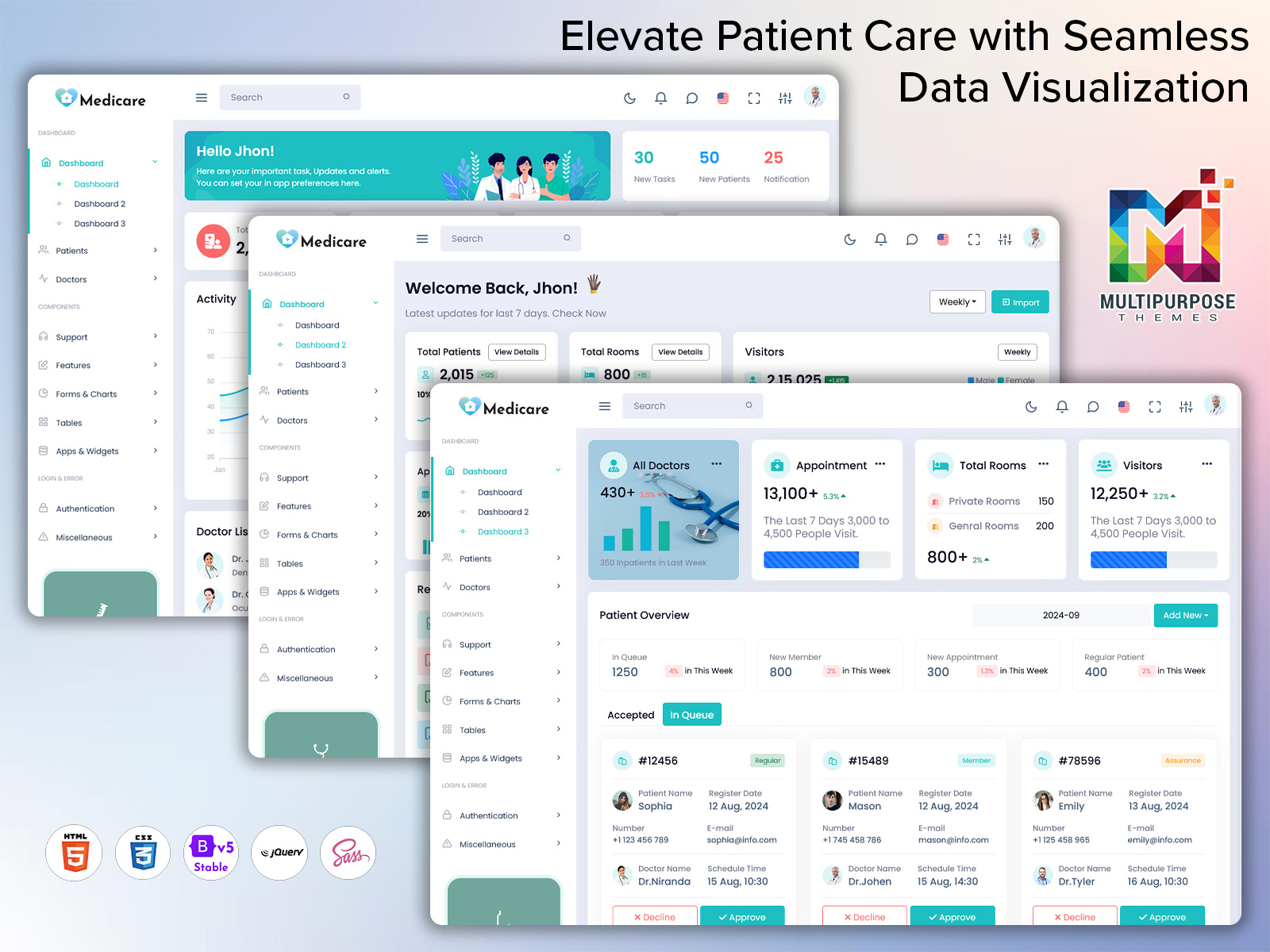
Admin Interface UIs with 20+ Trending Medical Dashboard in 2025
Reading Time: 8 minutes
In today’s data-driven healthcare environment, managing patient records, doctor performance, and hospital operations efficiently is vital. A Medical Dashboard acts as a digital control center that simplifies this process, bringing all critical healthcare insights into one easy-to-use interface. Whether it’s monitoring patient health, tracking hospital performance, or managing doctors’ schedules, a Medical Dashboard Template ensures seamless coordination across all departments. Hospitals and clinics increasingly rely on dashboards to visualize real-time data, reduce manual errors, and make data-backed decisions. With a Hospital Dashboard, administrators can evaluate KPIs like patient flow, treatment efficiency, and occupancy rates. Similarly, a Doctor Dashboard helps medical professionals view patient histories, treatment progress, and upcoming appointments. Meanwhile, a Patient Dashboard empowers patients to track their health reports and communicate easily with their healthcare providers. Together, these dashboards create a powerful ecosystem that enhances patient care, operational performance, and medical decision-making.
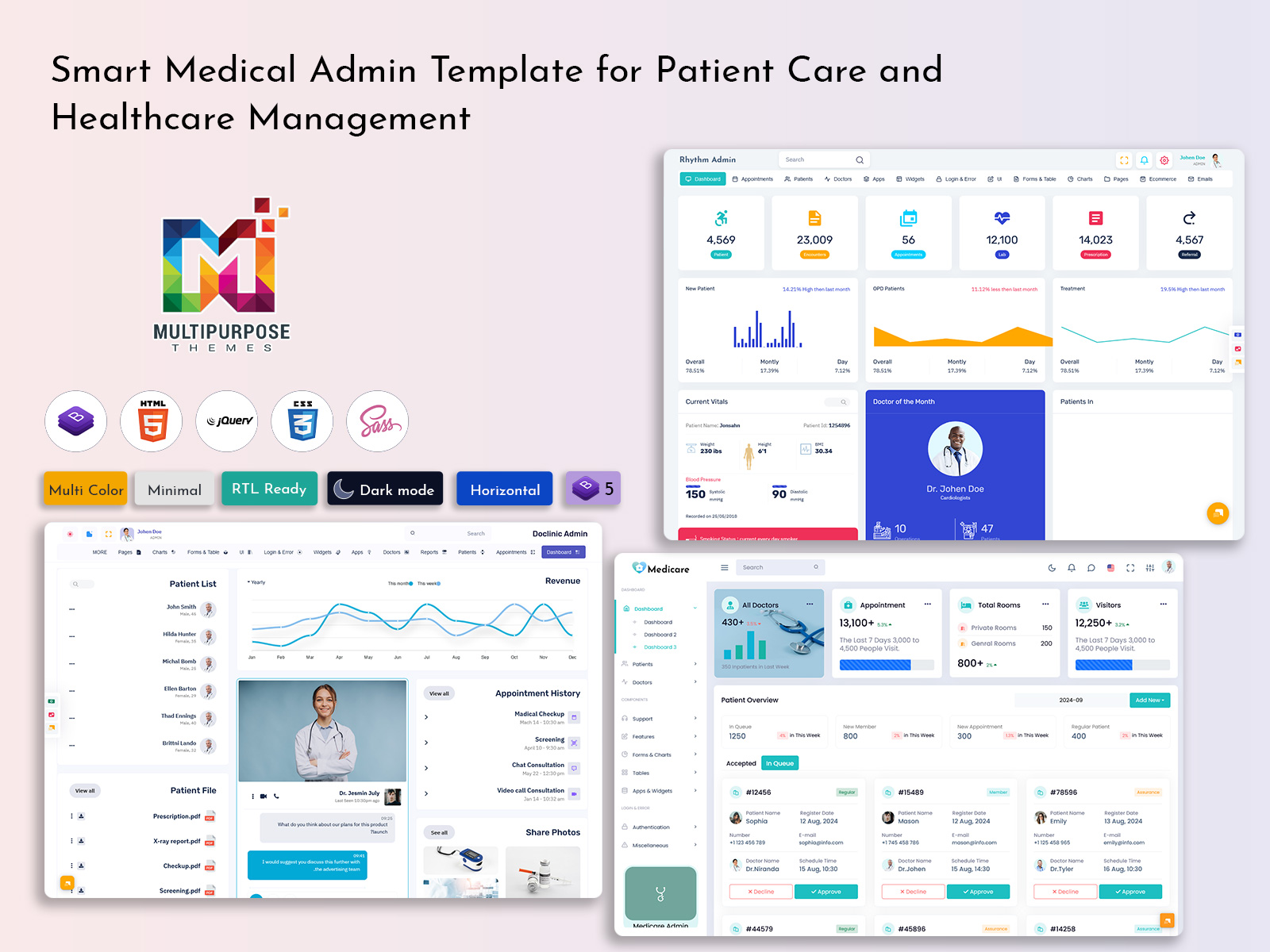
What is a Medical Dashboard?
A Medical Dashboard is a digital interface designed to display healthcare data in a clear and organized way. It integrates information from different hospital systems to present a real-time overview of operations, clinical performance, and patient health. With visual charts, graphs, and metrics, it helps medical professionals and hospital administrators monitor treatment outcomes, resource usage, and patient satisfaction efficiently. Unlike traditional spreadsheets or manual reporting, a Medical Dashboard Template updates automatically, allowing instant access to vital data. It can track medical history, test results, and department performance, all within a few clicks. Moreover, the dashboard can be customized to meet the specific needs of doctors, patients, and hospitals. Whether managing a large healthcare network or a small clinic, using a Medical Dashboard ensures transparency, quick decision-making, and better coordination among staff. It’s a must-have tool for modern healthcare institutions striving for accuracy and efficiency.
Discover Our Healthcare Admins & Best Dashboard Design
1. Rhythm Admin
Dashboard
BUY NOW DEMO
Our Admin Template includes many medical dashboard designs. Click the button below to explore them
explore full admin template
2. Medicare Admin
Dashboard
BUY NOW DEMO
Our Admin Template includes many medical dashboard designs. Click the button below to explore them
explore full admin template
3. Doclinic Admin
Patients Dashboard
BUY NOW DEMO
Doctor Dashboard
BUY NOW DEMO
Hospital Dashboard
BUY NOW DEMO
Our Admin Template includes many medical dashboard designs. Click the button below to explore them
explore full admin template
Types of Dashboards for Healthcare
Medical Dashboard
A Medical Dashboard focuses on clinical performance and healthcare analytics. It gathers patient information, medical histories, and treatment statistics in one interface. With real-time monitoring, healthcare professionals can detect irregularities and improve service delivery. This dashboard supports better planning for medical procedures, efficient staff allocation, and resource management. By visualizing critical data, it allows healthcare administrators to analyze performance metrics and maintain compliance with industry standards. The Medical Dashboard Template can be customized for hospitals, laboratories, or diagnostic centers, helping streamline patient care while minimizing errors in data handling.
Doctor Dashboard
A Doctor Dashboard is designed specifically for physicians and healthcare specialists. It provides access to patient records, ongoing treatments, medical reports, and appointment schedules. Doctors can use this dashboard to monitor patient progress, update prescriptions, and analyze diagnostic results instantly. By integrating patient data, it allows medical staff to collaborate effectively and reduce communication gaps. The Doctor Dashboard also improves time management by centralizing all essential details, ensuring doctors spend more time on patient care rather than administrative work. It’s an essential tool for improving productivity and clinical accuracy.
Patient Dashboard
A Patient Dashboard gives patients a clear view of their health journey. Through this interface, patients can check their test reports, view upcoming appointments, and communicate with their doctors directly. It encourages patient engagement by allowing them to track their recovery progress, medication schedules, and lab results. A well-designed Patient Dashboard also enhances transparency, helping patients understand their medical data without confusion. With secure access and a user-friendly layout, it builds trust between patients and healthcare providers while promoting self-care and awareness.
Hospital Dashboard
A Hospital Dashboard serves as a comprehensive management tool for administrators. It offers insights into hospital operations, patient admissions, bed occupancy, billing, and staff performance. With the Hospital Dashboard, management can track KPIs like patient satisfaction, resource utilization, and emergency room response times. The dashboard integrates data from multiple departments—finance, HR, operations, and patient care—to provide a complete overview. This enables timely decisions and helps maintain high-quality standards across all hospital services. It’s a vital component for achieving operational excellence in healthcare institutions.
Benefits of Using Hospital Dashboard (Medical Dashboard)
Real-Time Data Access
A Hospital Dashboard provides instant access to real-time medical data across all departments. Administrators and doctors can monitor patient admissions, treatment progress, and staff performance simultaneously. This immediate access allows medical teams to respond quickly to emergencies, allocate resources efficiently, and prevent delays in critical care. By consolidating data from different sources into a single interface, the dashboard reduces the risk of errors caused by manual reporting. With automated updates and notifications, hospital staff can make informed decisions without waiting for end-of-day reports. Real-time visibility ensures proactive care, improves hospital workflow, and enhances overall operational efficiency, creating a safer environment for patients and staff.
2. Improved Patient Care
Using a Medical Dashboard, hospitals can significantly enhance patient care. Doctors have access to complete patient records, including medical history, lab results, and treatment plans, all in one place. This centralized information reduces diagnostic errors and ensures personalized treatment for each patient. Nurses and staff can monitor vital signs, follow treatment schedules, and coordinate care efficiently. The dashboard also allows doctors to track ongoing treatments, medications, and post-care plans, ensuring no steps are missed. By streamlining patient data and communication, hospitals can provide faster, safer, and more effective care, ultimately improving patient satisfaction and trust in the healthcare system.
3. Enhanced Efficiency
A Hospital Dashboard streamlines daily operations, saving valuable time for medical professionals. Administrative tasks such as appointment scheduling, billing, and record keeping are automated, reducing manual workload. Staff can focus on patient care rather than managing paperwork. Departments can coordinate seamlessly, ensuring that patient transfers, test results, and treatment updates are communicated instantly. With real-time data visualization, hospitals can identify bottlenecks, optimize staff allocation, and maintain a smooth workflow. The efficiency gained through dashboard use not only improves patient experiences but also reduces operational costs and minimizes delays in healthcare delivery. Overall, it makes hospital management more organized and effective.
4. Better Decision-Making
A Medical Dashboard Template empowers hospital management to make informed decisions quickly. Through analytics, charts, and key performance indicators (KPIs), administrators can assess patient trends, departmental efficiency, and resource utilization. Doctors can evaluate treatment effectiveness and identify patterns that may require intervention. With predictive insights, hospitals can anticipate patient influx, manage inventory, and schedule staff effectively. The dashboard consolidates complex data into simple visual formats, allowing decision-makers to act confidently. By providing actionable insights, it reduces guesswork, enhances strategic planning, and ensures that both medical and operational decisions are data-driven, improving overall healthcare outcomes.
5. Cost Reduction
Hospitals can significantly reduce costs by using a Hospital Dashboard. The dashboard identifies areas of resource wastage, such as unused inventory, overstaffed shifts, or inefficient workflows. By tracking equipment usage, bed occupancy, and treatment effectiveness, hospitals can allocate resources where they are most needed. This reduces unnecessary spending and ensures budget optimization. Automated processes also lower administrative costs by minimizing manual paperwork, errors, and redundant tasks. Real-time reporting allows management to detect inefficiencies early, preventing costly mistakes. By combining data-driven insights with operational oversight, hospitals can provide high-quality care at a lower cost, benefiting both patients and healthcare providers.
6. Transparency and Accountability
A Hospital Dashboard fosters transparency and accountability across healthcare teams. Every department can monitor its performance, track targets, and identify areas for improvement. Doctors, nurses, and administrators have access to the same metrics, creating a unified view of hospital operations. This reduces miscommunication and ensures everyone is accountable for their responsibilities. Real-time data visualization allows management to audit workflows, identify delays, and take corrective action promptly. Transparency in operations also improves patient trust, as hospitals can demonstrate adherence to care standards and protocols. Overall, dashboards enhance organizational integrity and encourage a culture of continuous improvement.
7. Data Security and Compliance
A modern Medical Dashboard Template ensures secure handling of sensitive patient data. Healthcare organizations must comply with strict regulations like HIPAA, GDPR, and local medical standards. Dashboards provide secure logins, encrypted data storage, and controlled access levels to protect patient records. Administrators can monitor who accesses data and when, ensuring accountability and privacy. Compliance features embedded in the dashboard help hospitals avoid penalties and maintain trust. Additionally, automatic backups and audit trails safeguard against data loss. By integrating security measures into everyday operations, hospitals can focus on delivering quality care without compromising patient confidentiality, making dashboards a vital tool for modern healthcare management.
Types of Healthcare Sectors – Utilize Our Medical Dashboard Template
1. Hospitals
Hospitals are complex healthcare organizations that handle large volumes of patients, staff, and medical equipment. Using a Medical Dashboard Template, hospitals can monitor real-time patient admissions, bed occupancy, and treatment effectiveness. Administrators can track departmental performance, resource allocation, and compliance with healthcare standards. Doctors and nurses benefit from centralized access to patient histories, lab results, and medication schedules, ensuring accurate treatment plans. Hospitals can also use dashboards for financial monitoring, reducing operational costs while enhancing efficiency. By integrating all departments into one dashboard, hospitals improve decision-making, optimize workflows, and provide better patient outcomes, making dashboards an indispensable management tool.
2. Clinics
Clinics, whether small or multi-specialty, rely on efficient patient management. A Doctor Dashboard allows physicians to schedule appointments, access patient records, and track treatment progress effortlessly. Staff can monitor daily consultations, follow-up visits, and billing processes. Clinics often face challenges with patient communication and record keeping; a dashboard consolidates all this information into one platform. This improves efficiency, reduces errors, and ensures timely healthcare delivery. Patients also benefit from features like appointment reminders and online report access. Overall, dashboards streamline clinic operations, improve doctor-patient communication, and enhance patient satisfaction, making healthcare services more reliable and organized.
3. Laboratories
Medical laboratories process numerous test samples daily, requiring precise tracking and reporting. A Medical Dashboard allows lab managers to monitor sample status, turnaround times, and result accuracy in real time. By integrating lab data with hospital or clinic systems, results are automatically updated in patient records, reducing manual errors. Staff can prioritize urgent tests, track equipment usage, and maintain quality standards. Dashboards also provide analytics on test volumes, repeat tests, and efficiency metrics, helping laboratories optimize workflow and resource allocation. By utilizing a Medical Dashboard Template, labs ensure accurate reporting, faster results, and better coordination with healthcare providers, enhancing overall patient care.
4. Telemedicine Centers
Telemedicine is rapidly growing, and patient monitoring remotely requires robust data management. A Patient Dashboard allows healthcare providers to track virtual consultations, share prescriptions, and monitor patients’ vital signs from afar. Patients can access their medical records, schedule online appointments, and communicate directly with doctors through secure platforms. Telemedicine centers benefit from dashboards by consolidating multiple patient interactions, generating reports, and analyzing treatment outcomes. This improves efficiency, reduces delays, and ensures continuity of care despite distance barriers. A Medical Dashboard Template provides the technology backbone for telemedicine, enabling remote healthcare delivery while maintaining high-quality standards and enhancing patient engagement.
5. Healthcare Research Institutes
Healthcare research institutes collect and analyze vast amounts of medical data for innovation and discovery. Using a Medical Dashboard Template, researchers can monitor clinical trials, patient data trends, and study results efficiently. Dashboards consolidate information from multiple sources, allowing teams to track project progress, resource allocation, and statistical analyses. With visual insights, institutes can identify patterns, measure outcomes, and generate reports for regulatory compliance. By integrating patient records and lab data, research teams save time, reduce errors, and enhance collaboration. Ultimately, dashboards facilitate faster innovation, improve research accuracy, and contribute to the development of new treatments and healthcare solutions.
Why Choose Our Patient Dashboard Template
Our Patient Dashboard Template is designed with modern healthcare needs in mind. It combines a clean, user-friendly interface with advanced functionality, ensuring seamless communication between patients and medical staff. This template provides secure access to medical records, test results, and prescriptions while maintaining confidentiality and compliance with medical data standards. Patients can easily monitor their health status and connect with doctors for quick updates or consultations. The responsive design ensures smooth performance on all devices—mobile, tablet, or desktop. Hospitals and clinics can also customize the dashboard layout to align with their branding and workflow. Choosing our Patient Dashboard Template means enhancing engagement, improving trust, and delivering a superior healthcare experience for every patient.
Conclusion
In the modern healthcare landscape, Medical Dashboard Templates are transforming how hospitals and clinics operate. From tracking patient data to monitoring hospital performance, these dashboards bring clarity and efficiency to every level of healthcare management. A Hospital Dashboard, Doctor Dashboard, and Patient Dashboard collectively create a transparent system where communication and coordination thrive. Whether you manage a large hospital or a small clinic, using a Medical Dashboard simplifies data management and improves outcomes. Embrace this technology-driven solution to provide better care, boost productivity, and lead your organization toward a healthier, more efficient future.
FAQs
Q1. What is a Medical Dashboard?
A Medical Dashboard is a digital platform that displays real-time healthcare data for analysis and decision-making.
Q2. Who uses a Hospital Dashboard?
Administrators, doctors, and healthcare managers use a Hospital Dashboard to monitor hospital performance and patient care.
Q3. How does a Doctor Dashboard help physicians?
A Doctor Dashboard simplifies patient record management, appointment tracking, and treatment updates in one place.
Q4. Can patients access their reports through a dashboard?
Yes, a Patient Dashboard allows patients to access their health reports, prescriptions, and appointments securely.
Q5. Are Medical Dashboard Templates customizable?
Yes, every Medical Dashboard Template can be customized according to hospital or clinic needs.
Q6. Why should healthcare sectors use dashboards?
Dashboards enhance transparency, efficiency, and patient satisfaction by centralizing all healthcare data.
 skip to Main Content
skip to Main Content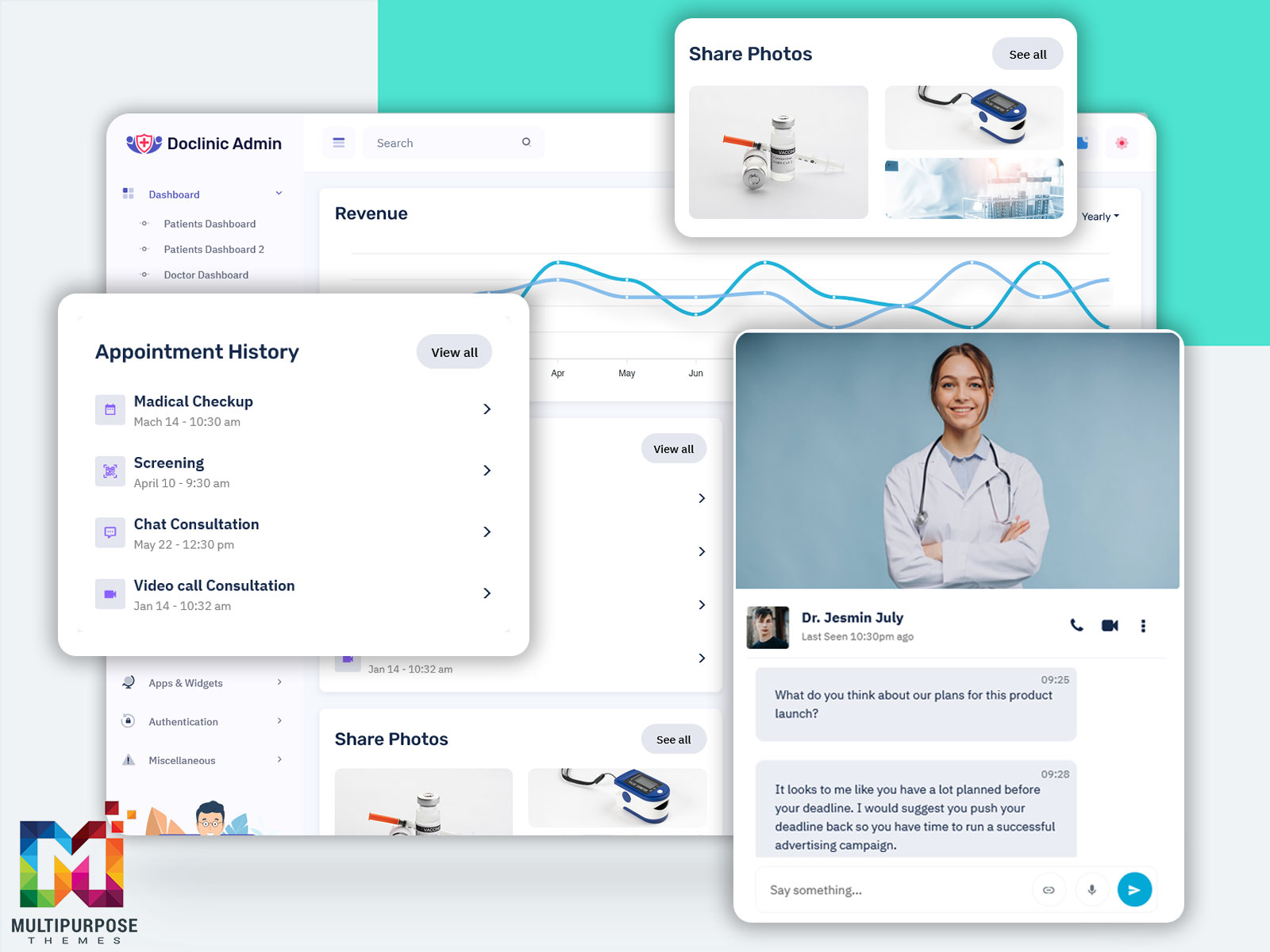
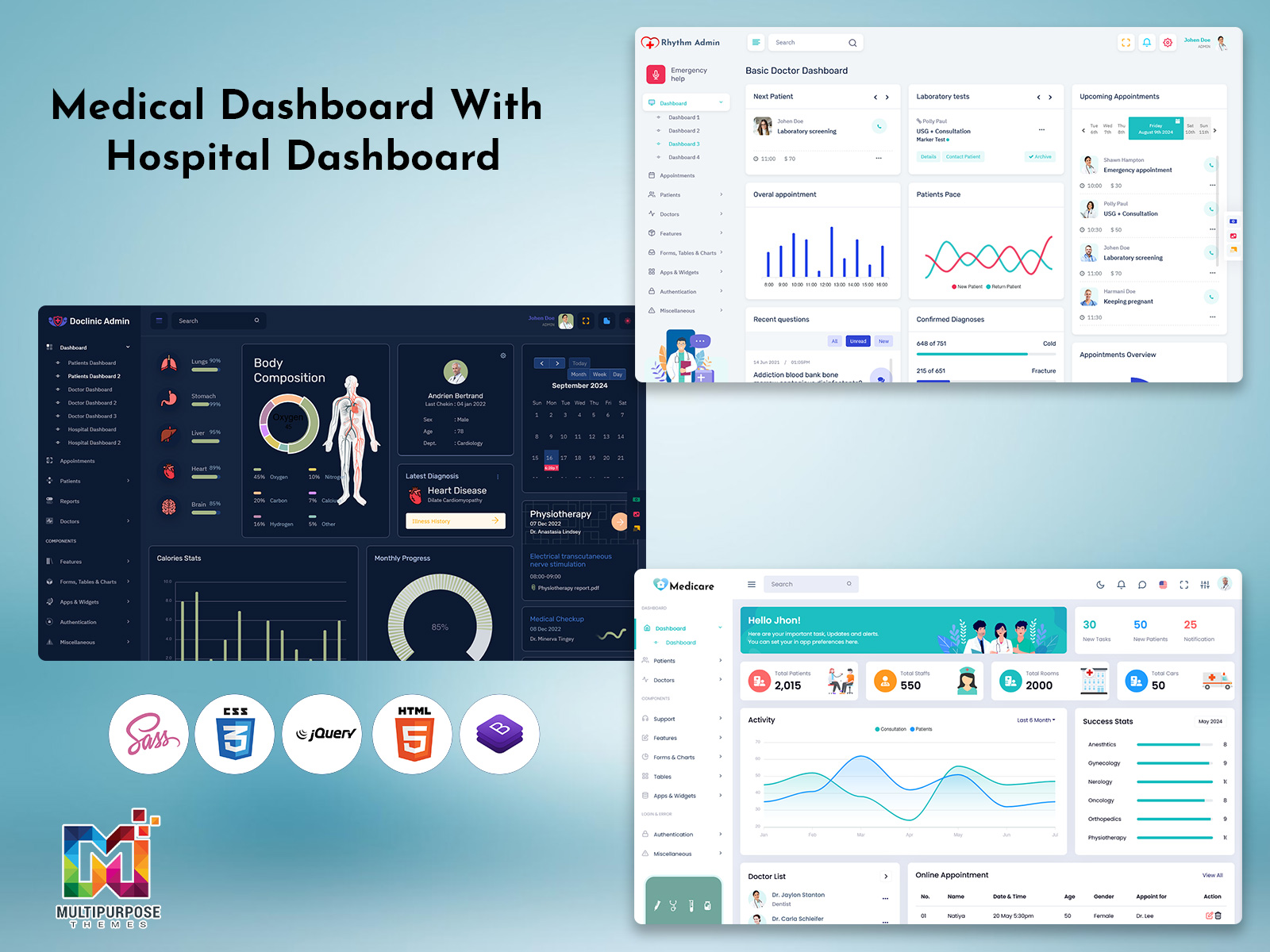
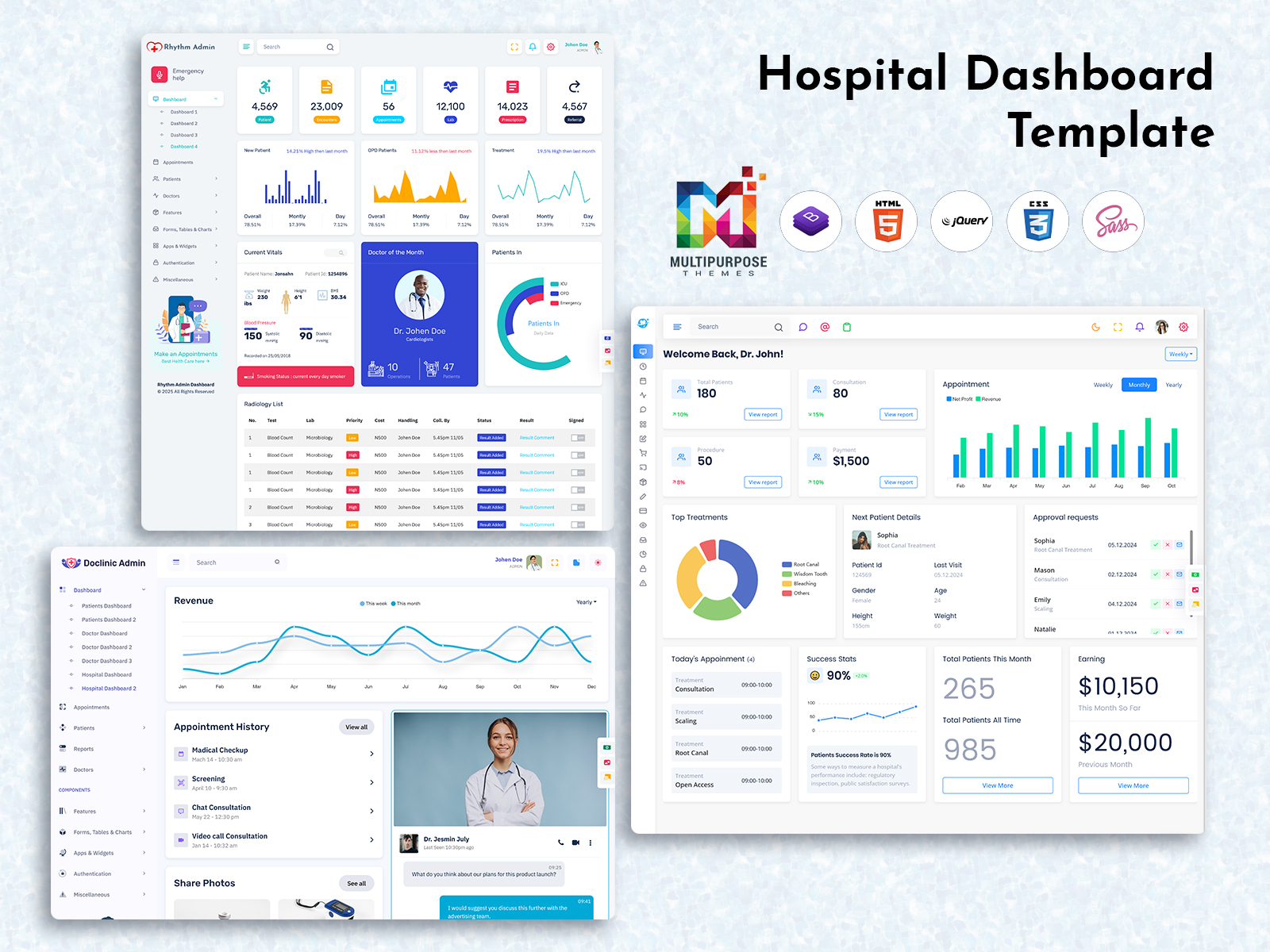
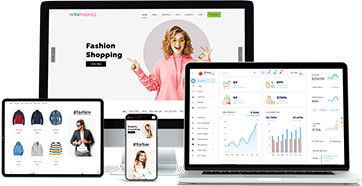

This Post Has 0 Comments